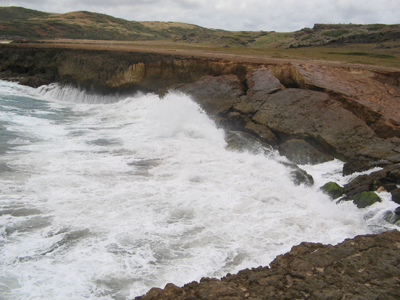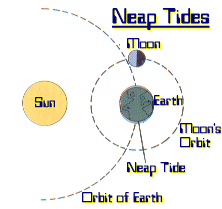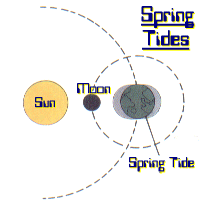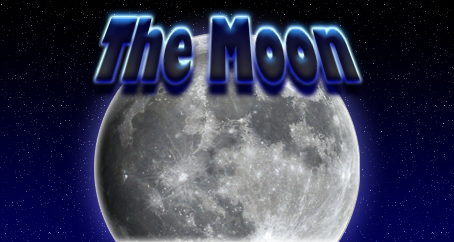The Moon and Tides

Every object, no matter how big or how small, has gravity. Usually, the more matter in an object, the greater the pull of gravity. This is why the Sun, containing 98% of the matter of the Solar System has a pull of gravity strong enough to keep Pluto in its orbit. Earth has a pull of gravity, keeping the Moon in its orbit, but the Moon's gravity, although only one-sixth the strength of Earth's, still has an effect on the Earth. This can be seen mostly with tides.
Water, being fluid, is attracted by the Moon's gravitational pull, enough to pull it slightly towards it. This causes tides. Earth's gravity pulls the water back. At the same time, the Sun's pull of gravity is attracting water. So, everyday, there are two high tides on Earth, one of them caused by the Moon's gravity, the other caused by the Sun's. The highest tides are when the Sun and the Moon are aligned so they are on the same side of the Earth. This usually happens at Spring and is called a Spring Tide. The lowest tides are when the Sun is at a right angle to the Moon. This causes a Neap Tide. The pictures below show how the positions of the Moon and the Sun affect tides on Earth.


The way tides work on Earth are similar to the process of 'Tidal Pumping' on Jupiter's moon, Io. Io is a moon situated in between Jupiter and Europa (another of Jupiter's moons), which is so volcanic because of the pulls of gravity of the Jupiter and Europa.
